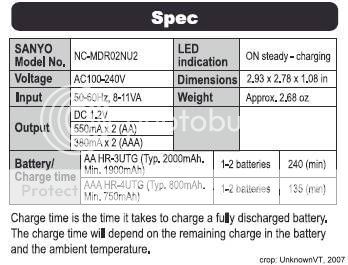i use 500-700-1000, they all work with healthy enloops, but 200, 200 is SOOO bad, it makes me wonder if i should put the charger on a UPS, because it will reset to 200 on a power outage (computer in it resets)
from my tests you can slowly overcharge a enloop in open air at 300ma for more than 100 hours without ruining it, using a constant non PWM method. in fact the cell displays MORE capacity after testing it, resting it and testing it again, even after charging it for the 100 hours. that test should give an idea that the enloops own charger should work just fine.
but in the 900 they totally baked at 200, hurt them worse than my torture test for some reason. they still are fine, but they got dang hot, and acted funkey for a while. (the 900 has less passive cooling than my test did, with its containment around the cells, and with the 900 the current is PWM Averaged not constant)
if i was making a recomendation of ONE setting, it would be 700, 200 is a disaster, 1000 is a bit hot, and 500 while it works ok, is below , and a cold room or a weak cell it could not terminate.




